I got a nice early start on April 17. (I know; I'm a little behind on these reports…) I zipped around the Washington Beltway to the infamous Route 5 Indian Head Highway, and after a bit crossed the Potomac River into Virginia on Route 301. Before long, I discovered St. John's Episcopal Church in King George, VA. Its services were interrupted during the Civil War, but it has otherwise had a continuous, active congregation from its construction in 1843 through the present.

But my true first destination of the day was Port Royal, Virginia, on the southern shore of the Rappahannock. It's one of a number of colonial villages in Virginia and elsewhere that have survived the last 250-plus years with remarkably few changes. Port Royal became an official town in 1744 when Governor William Gooch approved the petition for its creation, but it had been originally settled almost 100 years earlier. Its harbor was a major tobacco port until railroads replaced water transport. Two excellent resources on Port Royal are available at http://www.oldvirginiahouses.com/CarolineCounty.html and http://www.historicportroyal.com/Port%20Royal%20Tour.pdf.
My first stop (of course) was the Fox Tavern, built in about 1767. The receipts still exist from the several times that George Washington and Thomas Jefferson stayed here. These days, however, it's a private residence. I learned, incidentally, that Port Royal has issued roughly 70 tavern permits over the years—and this is a small town; good to know they have their priorities straight!
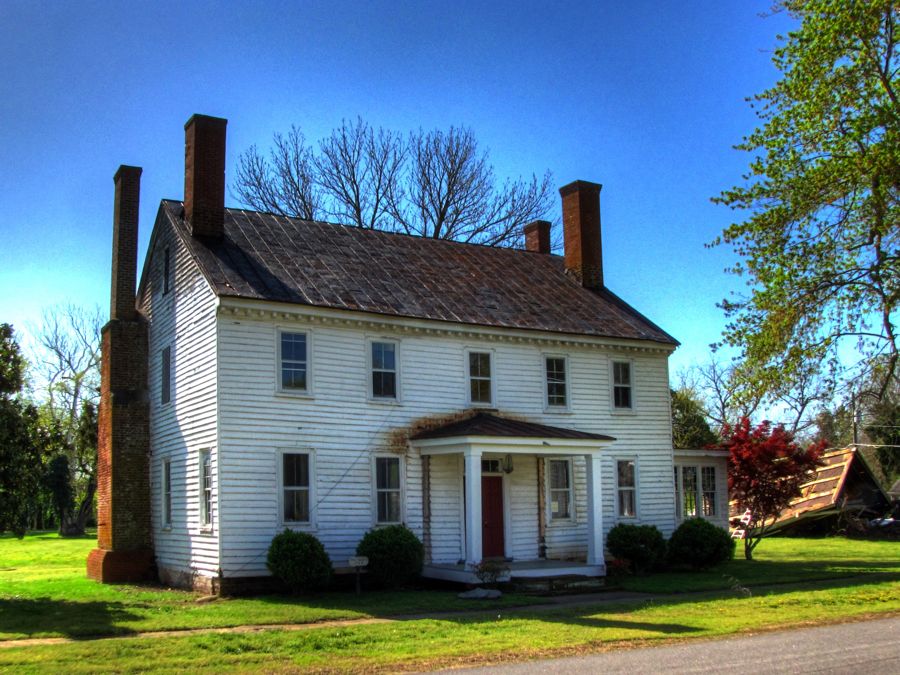
While there are some relatively new houses and (gasp!) trailer homes in Port Royal, many of the 35 remaining early dwellings are in excellent shape—and some have beautiful gardens, including this one:

Here are two examples of details that fall under the heading of "They don't build them like they used to." Both are from the house built by a Scottish couple, Andrew and Alice Leckie in about 1775. It originally served as the "new tavern" in Port Royal, before becoming a store and then the residence of the John Hipkins family and their descendants. The Cares bought it in 1825, and Frances Brockenbrough Holloway in 1878. Are you keeping up with this? Remember the pop quiz that might be announced at any moment… Anyway, for now just enjoy the chimney and front-door details.


Elsewhere in Port Royal, I discovered this garden statue made of old crab floats…

…St. Peter's Episcopal Church, which, after burning in 1849 was rebuilt and survived the Civil War, only to have its bell tower destroyed by lightning in 1868—at which time the stoic congregation, taking no further chances, built a new bell tower directly on the ground next to the church…

…and the majestic Riverview mansion, built by John Bernard Lightfoot in 1846 and damaged by shelling from Union gunboats during the Civil War. In 1865, a boat landed on the shore of this property, bearing 3 former Confederate soldiers and 2 other men, one with a broken ankle. They were invited in, but continued on foot further into Port Royal.

The men next went to the finest mansion in town, which had been built in the mid-1700s by Champ Brockenbrough and which was subsequently inhabited by his granddaughter, Sarah Jane Peyton and her brother Randolph (who was not at home at the time). She invited the group in and served them tea before realizing that it would not be proper for her, alone, to permit them to stay. She recommended that they travel 2 miles to the Garrett Farm, where she thought they could spend the night.

At the farm, the 2 men, having parted company with the former Confederates assisting them, had dinner with the Garretts and then took refuge in the tobacco barn. There, they were set upon by Federal soldiers in the early morning. David Herold surrendered without a fight, but John Wilkes Booth refused to come out. After the Federals set the barn on fire to force him out, one of the soldiers shot Booth through a gap in the barn's siding, paralyzing him and wounding him mortally. He was dragged out and died on the front porch of the Garrett's home 3 hours later. (Engraving courtesy of the Library of Congress.)

The Vauter's Episcopal Church sits just off Route 17 and is the 11th oldest of the 48 colonial churches still standing in Virginia. Constructed in 1731, it fell out of use after the Revolutionary War when the Church of England was disestablished in the U.S., but Vauter's was later rescued from decay and ruin by one Mrs. Muscoe Garnett, the widow of a member of Congress. On the day I visited, services were being held at the church. Long may it prosper.

If you have to stop, park, and get some pictures, you might as well park in a scenic spot.
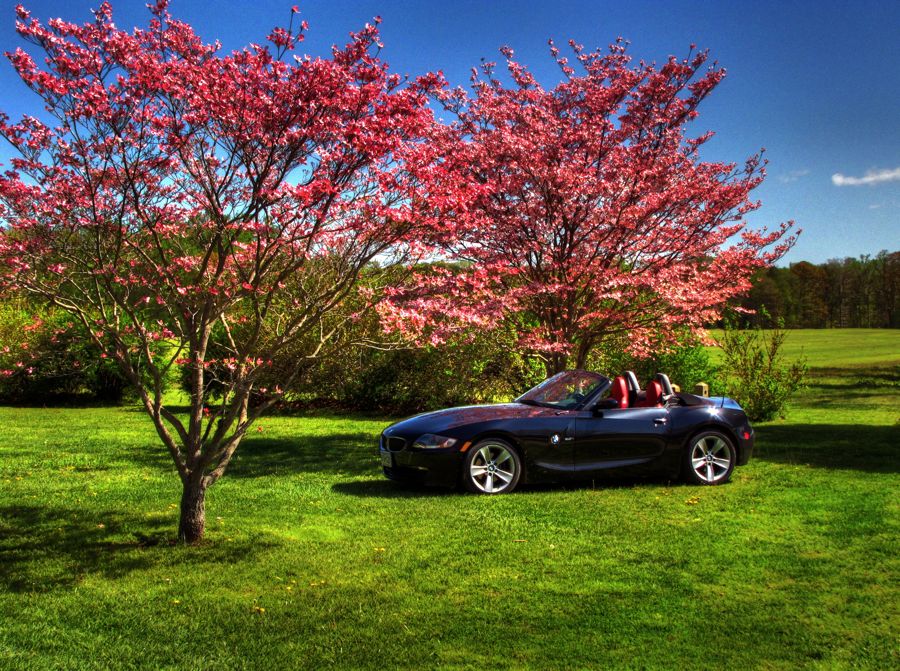
Next on my search list was the Wheatland mansion, rumored to be in this area on a bluff overlooking the Rappahannock—and rumored to have one of the very rare surviving steamboat wharfs on the river. As best I could determine, the house might be at the end of this long dirt road.
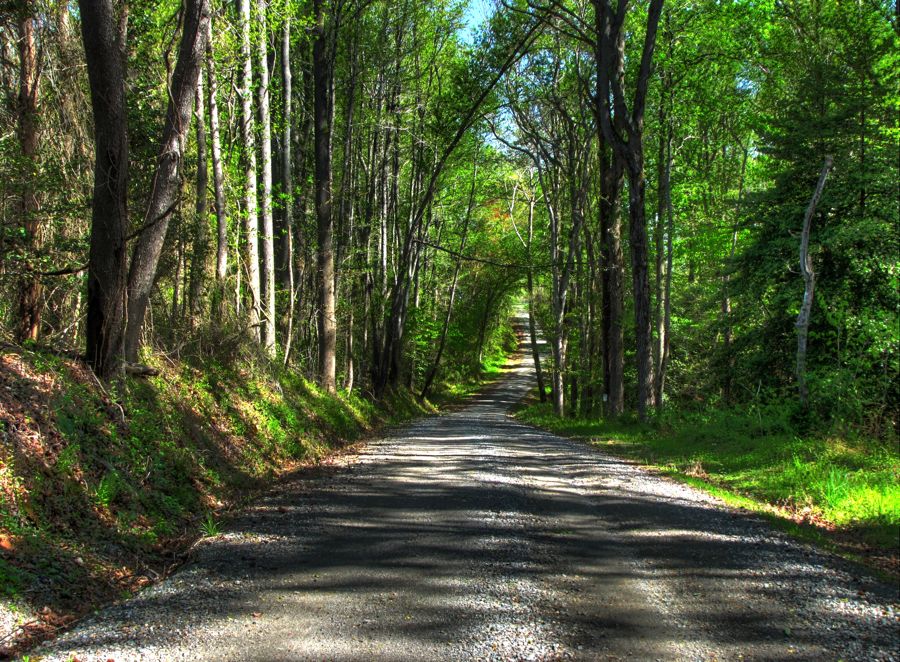
And it was. Not only that, but I chanced upon the current owner, who was out tending the graveyard and who said I was welcome to grab a photo or two. Not wanting to strain his patience, however, I contented myself with this picture of the house and (with incredible willpower) did not go rambling all over his estate. Note, in comparison to the sketch below (from the Essex County, VA web site), that there is now a later addition on the camera-side of the mansion. Still, it is a stately place, and I was fortunate to get a look at it.

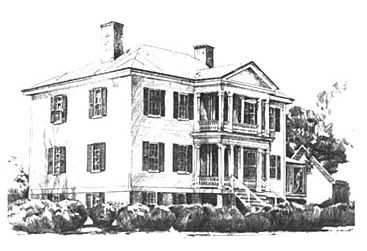
As usual, in any part of rural America you will find abandoned houses that will be lost to history within another decade or so.

Before I knew it, I had traversed Route 17 (a must ride or drive, incidentally) and arrived in the port town of Tappahannock. As the story goes, when Captain James Smith was mapping the Chesapeake Bay and its environs, he arrived here in 1608, and his attempt at landing was driven back by Indians. He gave the river the existing Indian name (see above) and named the village based on a contraction of "town on the Rappahannock." Well, I suppose he had to name a lot of places and might have run short of ideas. Regardless, "Tappahannock" has a nice ring to it, and it's another beautiful little town that everyone in this area should visit sometime. (Did I mention that, for a while, the settlement was known as "Hobbes His Hole"? I haven't found an explanation for this one.) If you're interested in a good walking tour of Tappahannock, look no further than http://www.essex-virginia.org/ta_walk.htm.
Among other features, Tappahannock is home to St. Margaret's School. Some of their buildings, including St. Margaret's Hall pictured here, are so large that you have to step back quite a distance to get it all in the viewfinder. Two more steps, and I would have been out o' dock.

Elsewhere, I arrived just as services were ending at St. John's Episcopal Church, a beautiful 1849 Gothic Revival structure. One of the deacons (who was also in charge of the following week's Easter Egg Hunt), invited me to look around inside.


Yep, Spring was showing itself (with one of the town's stately mansions in the background).

Near the harbor stood the Scot's Arm Tavern, which started up in 1680 and has been owned by the Derieux family ever since(!)

Right next door was the Customs House from the early 1800s, formerly the site of an "ordinary," that is, a public house or restaurant that would serve all patrons the same standard meal. (An early version of a fast-food restaurant? Who'd 'a' thought?)

And, finally, Cathy and Kim, I ran across the suitably majestic Beale Memorial Baptist church from 1728. This building used to be the town hall and in 1774 had been the setting for a trial of four Baptist ministers for "preaching and expounding the Scriptures contrary to law." After stewing over this outrage for 101 years, a group of Batptists formed the church and 3 years later aquired the town hall for their services.

On trips like these, you never know what is going to appear around the next corner. In this case, it turned out to be the "City of Fredericksburg" paddle-wheeler tour boat. I suspect that it's a complete recreation, unlike the original sites and buildings I'd seen all day, but it was nonetheless magnificent.

Regular readers know by now that I have a tendency to follow old dirt driveways in pursuit of photos of interesting barns, farmhouses, or other points of interest. This one looked very promising. Notice, however, the first patch of disturbed earth in the middle of the photo. I got across that in the Z4, with a fair amount of difficulty, but I decided not to attempt the next one. It was loose, uneven, rutted, and muddy! I settled for the following two photos, rather than have to explain to the local constabulary how I'd gotten stuck in a driveway where I probably shouldn't have been!


But—of course—I never learn. Yet another old dirt driveway led to a view of this once-impressive farmhouse. When things go wrong…

With some reluctance, I drove by the Virginia Motor Speedway without stopping to explore—I'll have to save it for another day. When I reached the town of Saluda, however, I couldn't ignore the stately Middlesex County Courthouse. During the Civil War, the county clerk Philemon T. Woodward hid all of the courthouse's records at an island in Dragon Swamp, thereby preserving this valuable source of historical information for subsequent generations. Did I mention that Philemon T. was the son of Philemon Woodward and Elizabeth Roane Brockenbrough? Yep, them Brockenbroughs show up all over Rappahannock country.

Another of my destinations on this day was Christ Church. Of course, if you think about it, this might be a popular name for a church, and the first one I encountered was not actually the one I was seeking. Still, in this part of Virginia, everything is going to be very historic and interesting, and this Christ Church, outside of Saluda, was no exception. The first church was built in 1666, and the present one was finished in 1712. Colonial Deputy Governor of Virginia Sir Henry Chicheley was buried in the original building in 1682, near the communion table. Since then, to the best of my knowledge, he has not wandered off. The church wasn't open when I stopped, but a photo through the window shows that it had held services earlier that day.


Just before reaching Grey's Point and the bridge across the Rappahannock to White Stone, this little inlet cried out to be photographed.

Nearby, I decided that the best modern art comes in the color black.

I couldn't determine why the steeple on the White Stone Baptist Church was positioned to slightly overhang the front of the roof. Anyone know? White Stone, incidentally, was yet another tobacco port and got its name from the British ships that dumped their white ballast stones around the town before loading up with tobacco.

A longish detour took me to Windmill Point on the Rappahannock, with its pretty views of the river and shoreline. At this point, the river is over 3 1/2 miles wide as it empties into the Chesapeake Bay, and I'd been following its shores for about 50 miles from Port Royal. I've been a big admirer of both the Potomac and Shenandoah Rivers all my life—and I now have to add the Rappahannock to the list.
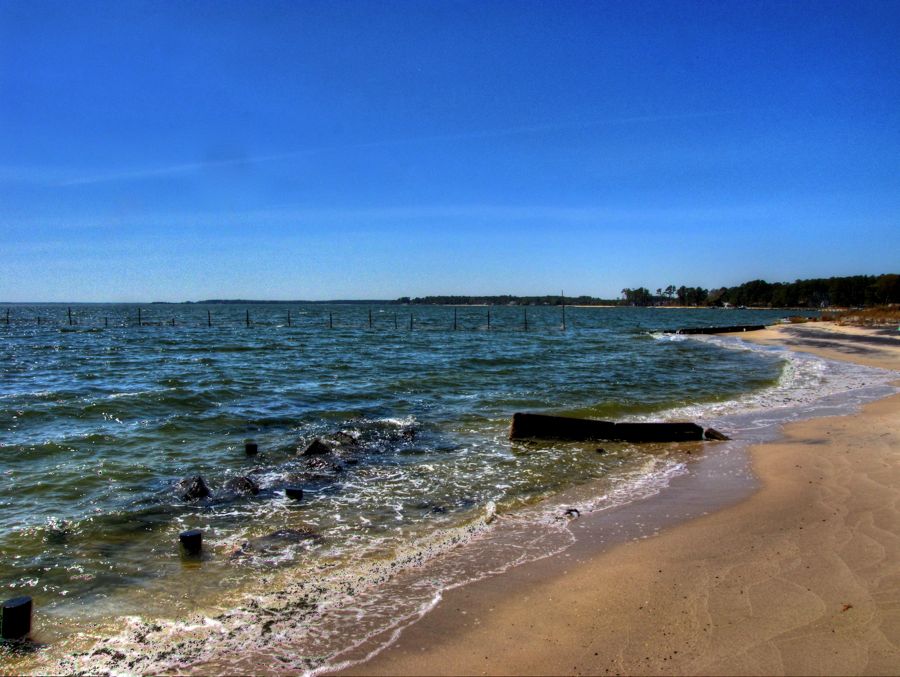
The detour, incidentally, took me along a spit of land in-between the Rappahannock River and Antipoison Creek. How do creeks get such names, you wonder? Well, the story goes that when Captain James Smith was mapping the Chesapeake and had been driven away from Tappahannock by Indians, he was stung on the nose by a stingray. He feared for his life, but a different group of Indians knew how to prepare a poultice to counteract the venom, and it worked. Captain Smith promptly named the creek where the Indians lived "Antipoison Creek." Sounds convincing to me.
Retracing my steps and driving back through White Stone in search of the other Christ Church, I spotted this tranquil-looking estuary of the Rappahannock, complete with boat houses that were nicer than some of the "people houses" I'd seen earlier in the day. Nice setting.

A few miles outside of White Stone, I found Christ Church and was delighted to discover that it was open for tours that afternoon. The first church at this location was built in 1670 by John Carter. His son, Robert "King" Carter, financed the construction of the current church, which was finished in 1735. It's laid out in a cross-shaped fashion, not surprisingly, but its sides are of approximately equal dimensions. It was an Anglican house of worship (Church of England) and today represents the best-preserved of Virginia's Anglican structures.

With its exceptional detailing, Christ Church was considered one of the finest chapels of the colonial period, and it has survived largely intact and in excellent condition. More information is available at http://www.christchurch1735.org/.

Although this photo doesn't do them justice, these original pew boxes have unusually high sides. Once seated, a family could not see any of the other families attending, but they could all see the preacher, thanks to the high-mounted "triple decker" pulpit.
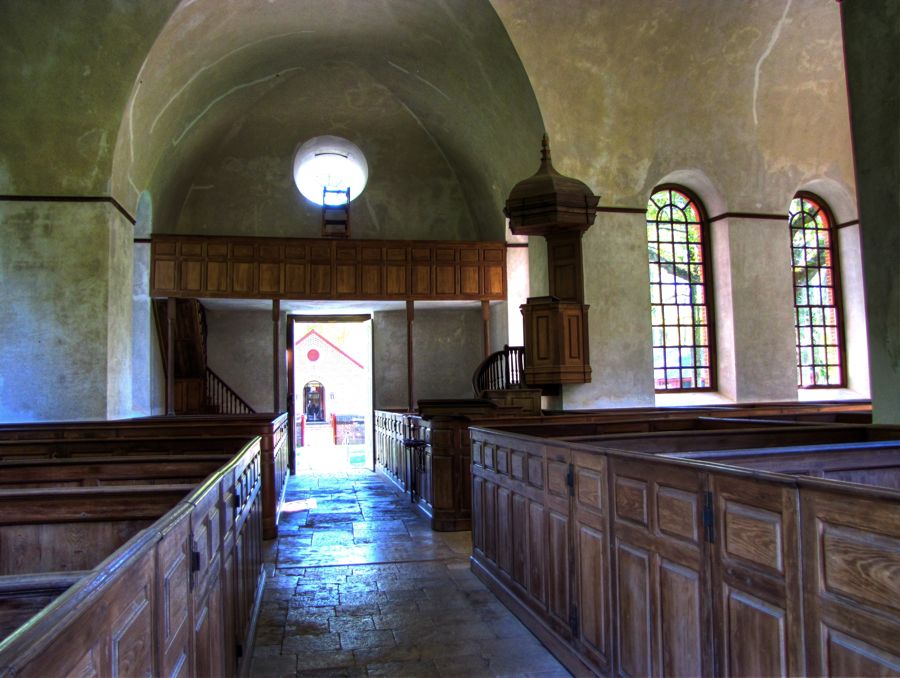

The baptismal font is made of Carrera, Italy marble (which was Michelangelo's favorite stone, in case you were wondering).
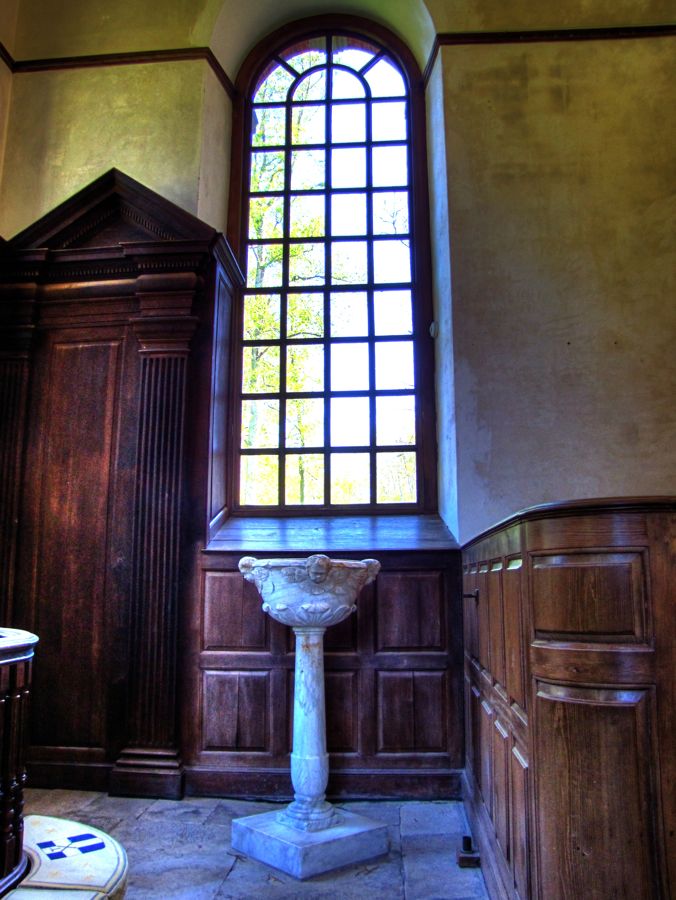
The stone paving and walnut alterpiece are original, although the wooden "tablets" with the Ten Commandments are a later addition. The church has no electricity (not counting the alarm system).

Robert Carter was widely known as "King" Carter as a result of his wealth and influence. He apparently did not discourage the use of this title. As it happened, he died before Christ Church was completed. He was buried in an above-ground tomb (the farthest from the camera in the photo below), with his second wife, Betty, at his side, and his first wife, Judith, next in line. (Robert and Judith had 5 children, and with Betty, 10 more.)



I couldn't resist this photo, since it's nearly impossible to tell where the interior of the church stops and the reflection of the trees and skies starts.

There is a visitor center at Christ Church, with a terrific museum and a team of charming ladies who conduct the tours. Entrance is free, but visitors are encouraged to make a donation (as well we should). Start planning your own visit—you won't find a more original colonial church anywhere.

After the delightful tour of Christ Church, I was back on the road—and quickly off the road, as usually happens during my trips. Many of the most interesting scenic and/or historic places involve a bit of cross-country work.

The Morattico Baptist Church merited a photo, if only to help me stay on the good side of Kim and Cathy… It was surprisingly modern, despite having been constructed in 1856.

Sometimes, in the pursuit of interesting old homes and other buildings, this is all the closer you can get.

From the Route 200 bridge over the Wicomico River, I spotted this "dock to nowhere" lurking in the shadows.

Speaking of shadows, the sun was rapidly heading for the horizon, and I still had a number of destinations on my list. I found that Stratford Hall Plantation, birthplace of Robert E. Lee, had already closed for the day. But the George Washington Birthplace National Monument had not yet shut all of its gates. With some trepidation that the remaining gates might be closed and locked with the trusty Z4 on the wrong side, I nonetheless hurried off to find the family cemetery. George's great-grandfather had settled this area in 1657. George was born in the family home, "Wakefield," but it was lost to history as a result of a fire and flood on Christmas Day in 1797. (There's presumably quite a story here, since fires and floods seldom occur at the same time, not counting the Cuyahoga River in Cleveland…)
A short hike brought me to the well-tended family cemetery. George Washington, of course, is buried at Mount Vernon, but his father, grandfather, and great-grandfather are all here. (His mother is buried in Fredericksburg, VA.) The cemetery was changed substantially in the 1930s, with the various graves consolidated into a single vault.

I managed to exit the park without getting locked in, and pressed on. I had one more "must see" destination before turning north for home. The town of Colonial Beach was a popular summer spot in the late 1800s and early 1900s, with bathers arriving by steamboat from Washington and other areas. It actually dates back to the mid-1600s, having been settled by Andrew Monroe who immodestly named the place "Monrovia." (But we'll cut him some slack, since he was the great-great-grandfather of President James Monroe. Yes, Virginia boasts a number of Presidents and their forbearers.)
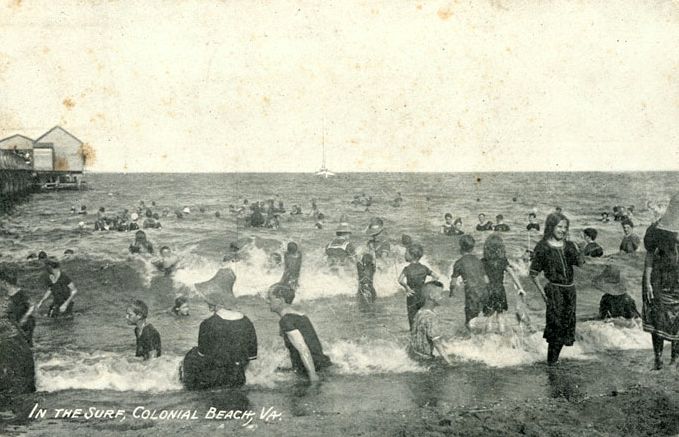
Among the many attractive Victorian-style homes, the Bell House stands out. It was the summer cottage of Alexander Graham Bell and his family for many years. Today it's a bed & breakfast.

As the automobile made traveling to the Atlantic beaches more convenient, Colonial Beach began to lose its popularity. It had a bit of a resurgence in 1949-1958 as a result of casino piers extending into the Potomac River—but there was a catastrophic fire in 1960 that burned them all to the waterline. Colonial Beach is once again gaining in popularity and is now home to numerous artists (and at least one artistic wood carver).

With one last look at the beach, it was time to hurry home.

All in all, my day full of rivers and ports was thoroughly enjoyable. This is a great country, and, even with gas at $4.00 a gallon, the driving, touring, and sightseeing can't be beat.
Rick F.





